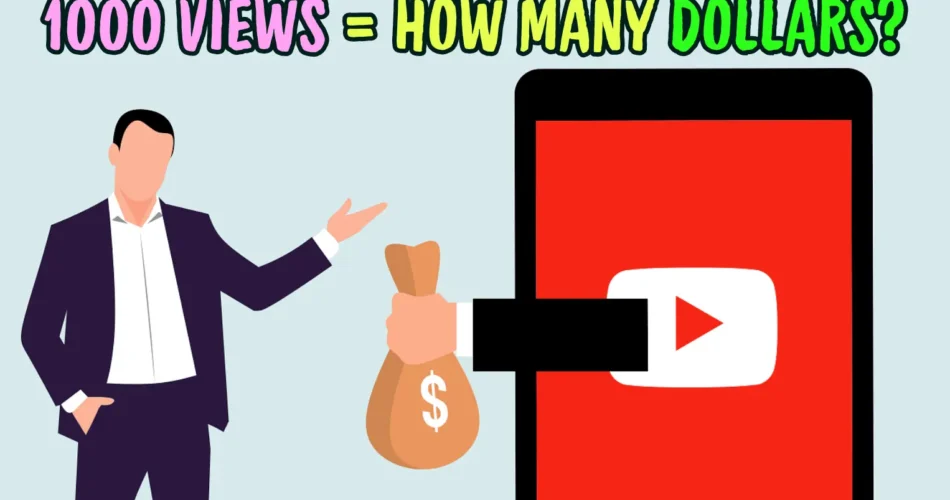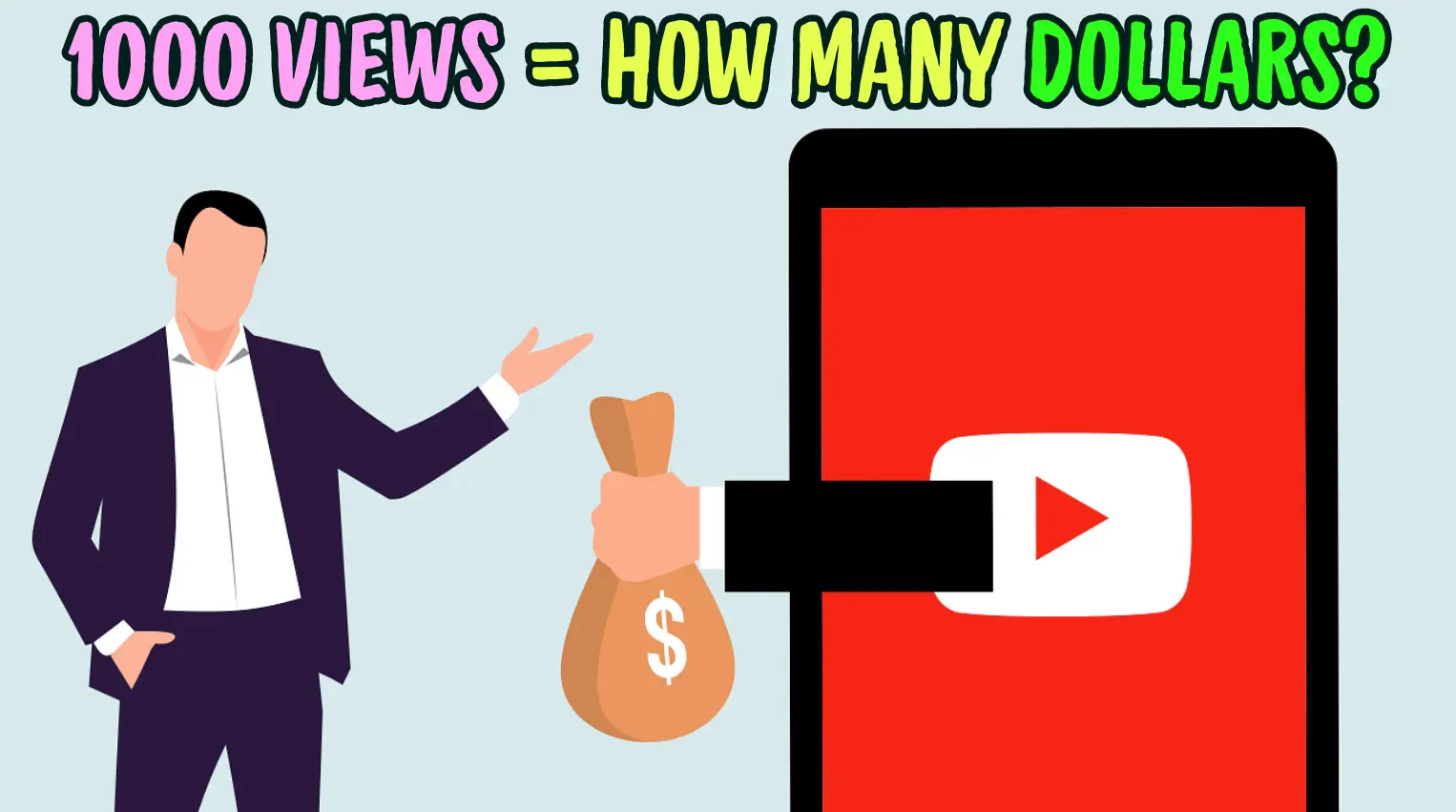
Disclosure: This post may contain affiliate links. This means I may earn a commission if you click on a link and make a purchase. Clicking the links comes at no extra cost to you.
YouTube is one of the most lucrative platforms offering content creators with various monetization options. This free video-sharing website lets you earn primarily from its Partner Program.
New content creators, or those who are dreaming of starting a career in YouTube are highly eager to turn their passion into a paycheck. At the heart of this aspiration lies a burning curiosity: just how much does YouTube pay for every 1,000 views?
To address this question, I’m writing this blog covering the various aspects of YouTube monetization that affect how much you can earn per 1,000 vies.
We’ll be exploring how RPM, CPM, video length, location, demographics, and niche affect the earnings per 1,000 views on YouTube. So, let’s get started.
Table of Contents
Understanding YouTube Monetization
Successful YouTubers are making over $100,000 per month just from Ad Revenue. This is all possible with the YouTube Partner Program (YPP) which allows you to monetize your videos once your channel gains 1,000 subscribers, and 4,000 watch hours in the last 365 days.
While watching videos on YouTube, ads are displayed before, during, or after. Advertisers bid on these placements, and creators get paid when viewers watch the ads.
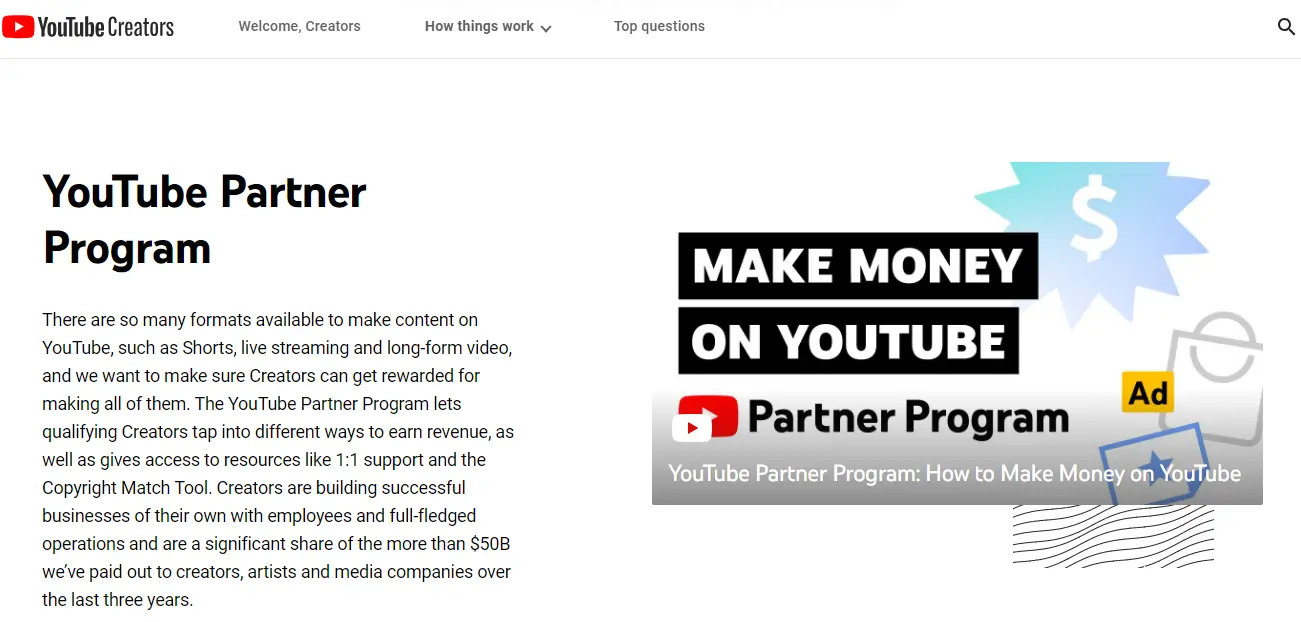
Two key metrics RPM (Revenue Per Mille), and CPM (Cost Per Mille) are responsible for determining how much YouTube pays per 1,000 views.
Understanding RPM vs CPM
RPM, and CPM are responsible for the estimation of the amount of revenue you earn per 1,000 views however, each one approaches with different angles.
CPM (Cost Per Mille) represents the cost an advertiser pays for 1,000 impressions of their ad on your YouTube videos.
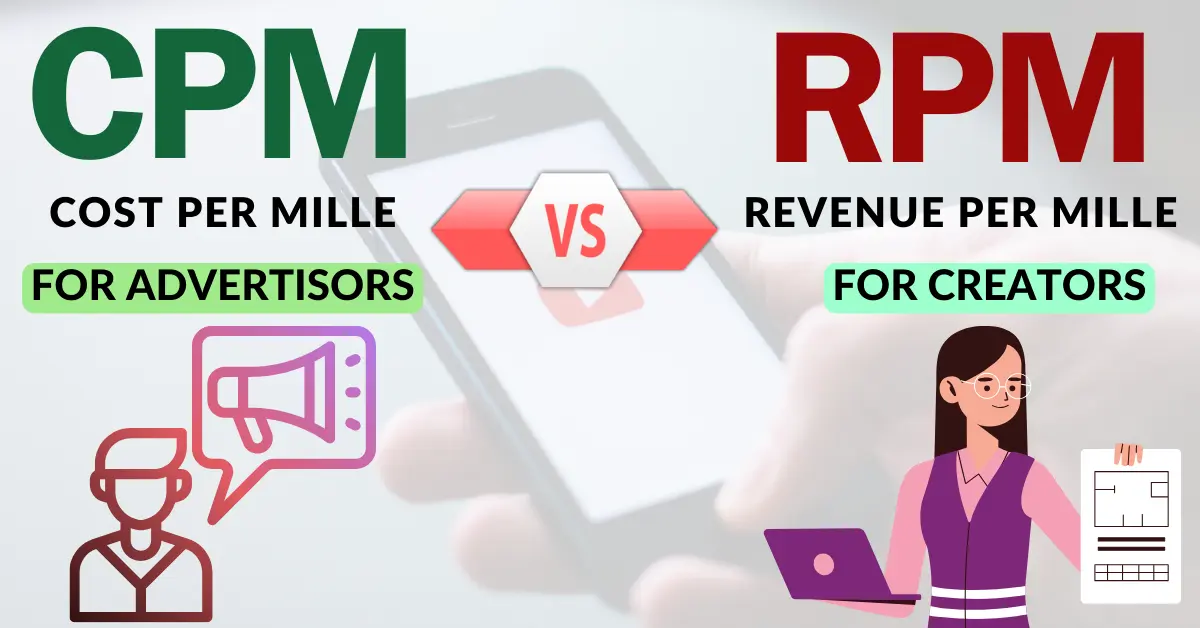
On the other hand, RPM (Revenue Per Mille) is a creator-focused metric that shows how much you can earn per 1,000 views from the ads displayed. RPM includes all monetization sources including Ads, Channel Membership, Super Chats, and YouTube Premium Revenue.
For instance, if your RPM is $15, it means you’ll be earning almost $15 for every 1,000 views on your videos.
Now, let’s explore the main factors affecting the RPM.
Location and Demographics
The world of YouTube is vast, and your audience isn’t confined to your locality. Depending on where your viewers come from can impact your RPM.
Imagine a brand selling luxury cars. They’d likely be willing to pay more to have their ads displayed in front of viewers with higher disposable incomes. This translates to higher CPMs for certain locations and demographics.
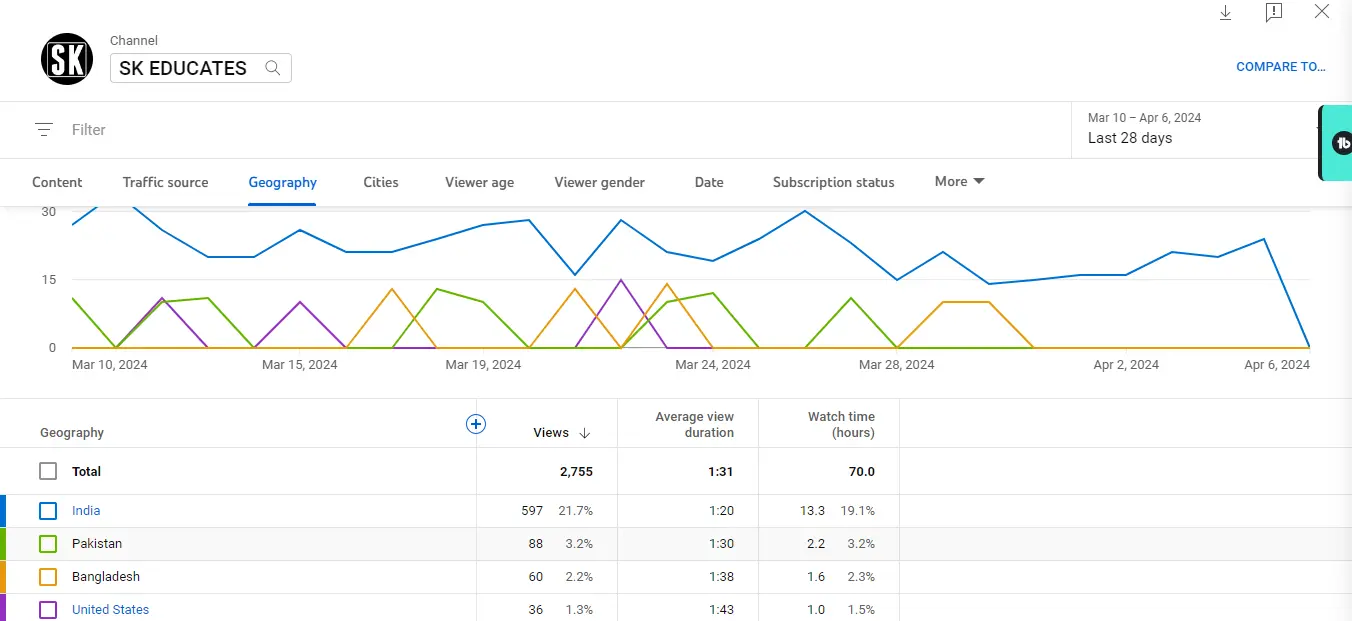
So, if a large portion of your audience comes from countries with strong economies (ex. USA, UK), your RPM could be boosted.
Economic Landscape, Cost of Living, and Local Purchasing Power can directly affect how much advertisers pay. For example, people living in economically bustling cities like New York, and London spend relatively more than those cities with average, or low economics.
That’s why, if your viewers are from economically profound cities, advertisers will pay more to grab a top spot on your video. With that, the CPM increases boosting your RPM.
This takes us to the next factor for determining RPM: The Video Length!
Tube Mastery and Monetization by Matt Par
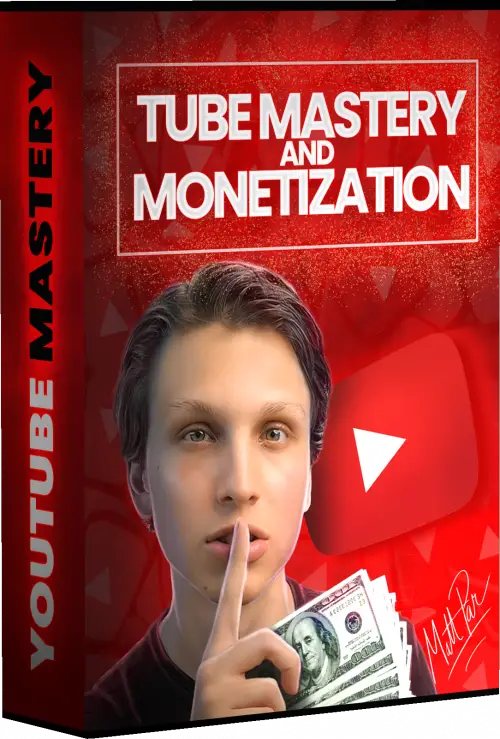
The BEST YouTube Course and Community
- Bonuses & Checklists
- Step-By-Step Course
- Private Community
- 100% Money Back Guarantee
Video Length
The length of your video is another factor that can measure how much you can earn per 1,000 views on YouTube.
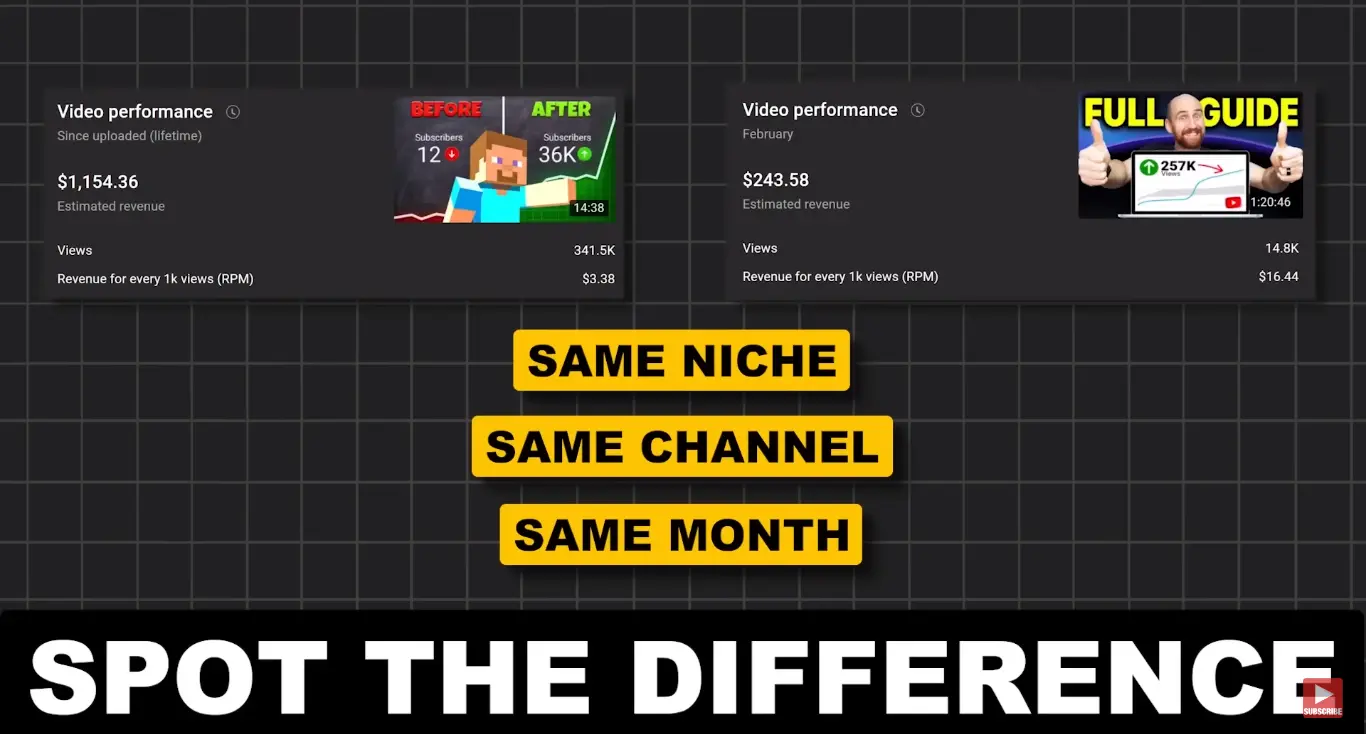
In this example shown by vidiQ, there are two videos covering the same niche, published in the same channel, and the same month. However, the only difference is the length: one is almost 15 minutes long while the other is over 1 hour.
Also, you can see the RPM for the video with a longer time is $16.44 while the RPM for the 15-minute video is $3.48.
Producing longer videos is a strategy to earn more from YouTube ads however, you might struggle to maintain audience retention. So, focus on producing high-quality, and valuable videos.
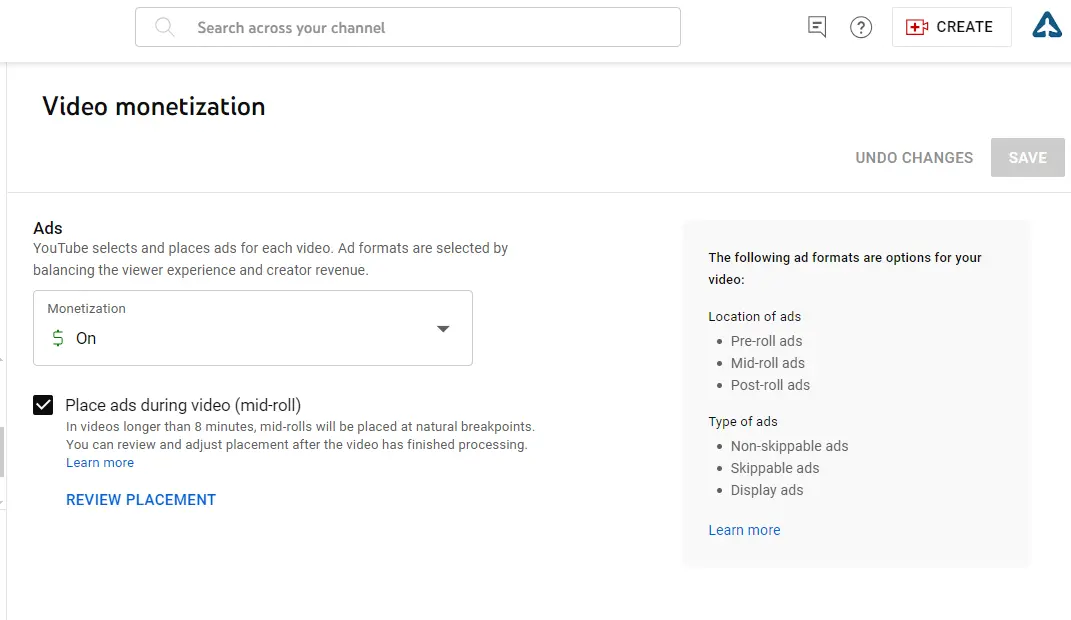
There is an option to add more ads on your YouTube videos with a length of over 8 minutes. In your YouTube studio, you can find a Video monetization section with an option to turn on ‘Place ads during video (mid-roll)’ in videos longer than 8 minutes.
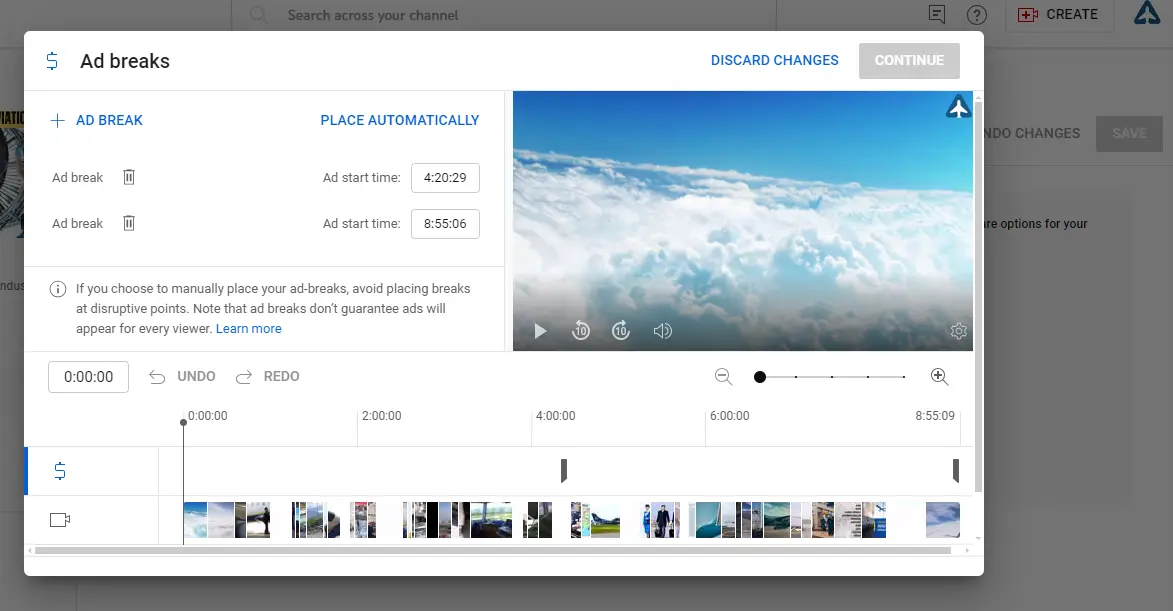
Moreover, you can manually set up ad placeholders in your videos. I recommend leaving this task for YouTube because the system automatically adjusts ads based on your performance. But if you want custom placement you can do so. Just keep in mind to avoid placing too many ads.
Don’t fall into the trap of simply stretching out your videos. Focus on creating compelling content that keeps viewers engaged throughout, regardless of length. This will naturally create more opportunities for ads to be seen, potentially boosting your RPM.
Now, this takes us to another key factor for determining RPM which is the ‘Niche’.
Niche
Niche is one of the most important factors for determining the RPM of your YouTube channel. There are various high-paying niches with RPM crossing $20 whereas you might get into niches that pay RPM of less than $0.10.
If your niche caters to a highly sought-after audience (think finance or business), companies might be willing to pay more to have their ads displayed in front of those viewers. This translates to higher CPMs for those niches, potentially boosting your overall RPM.
On the other side, some niches with high compettion may lead to lower RPMs. For instance, if you create gaming content, you might face huge competition for ad space. This in turn lowers CPM, and directly affect your RPM.
Niches like Cooking, Reaction Videos, Fitness, and Music produce low earnings on YouTube whereas niches such as finance, making money online, and investing potentially yield higher earnings.
A good niche combines the advertiser’s interest, competition you can handle, and also the content you love doing. Exploring areas with a high viewer presence and their types of ads will provide you with the data you need. Recall that, even inside a niche, you are able to carve out your space by focusing on a sub-category or provide a special perspective.
Average RPM by Niche in 2024
As we discussed above, RPM for a YouTube channel depends on various factors including niche, location, demographic, and video length. With these factors, you will find RPM ranging from $0.50 to over $10.
Here’s a general idea of RPM in 2024.
- $0.50 – $3.00: This is a common range for many creators, especially those starting out or in competitive niches.
- $3.00 – $6.00: This is a healthy range for established YouTubers with engaged audiences and strategic content.
- $6.00+: This is considered a high RPM range, often achieved by creators in highly sought-after niches with strong audience demographics and exceptional production value.
Let’s look at an example.
A YouTube channel related to the finance niche ‘Joshua Mayo‘ is earning an average of $20 for his content. On certain days, his RPM peaks at $40.
| PROFITABLE YOUTUBE NICHES | AVERAGE RPM |
| Make Money Online | $13.50 |
| Digital Marketing | $12.41 |
| Personal Finance and Investing | $12.23 |
| Business & Entrepreneurship | $12 |
| Educational Content | $9.89 |
| Photography & Film Making | $7.31 |
For example, if you have published a video on the topic ‘How to earn with a Faceless YouTube channel?‘, your RPM could cross $20. However, if you have published a guide to start a gaming channel, your RPM could be less than $9.
Here in this example by vidiQ, you can see the fluctuation of CPMs depending on the type of video.
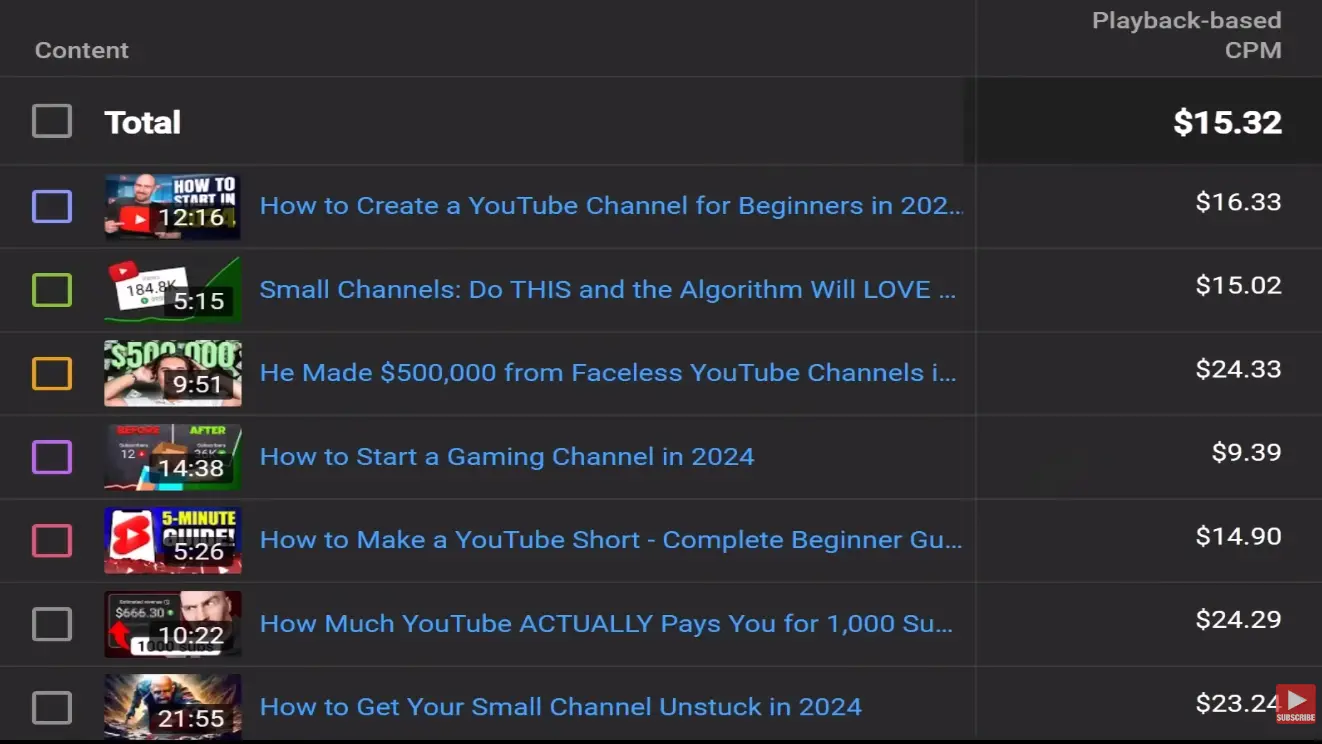
Earning Potential on YouTube Besides Ad Revenue
Earning per 1,000 views, RPMs, CPMs…Is this what creators should be focusing on if they want to make their YouTube career financially secure? Well, there are lots of other options to boost your earnings besides YouTube ad revenue.
Here is a case study of a YouTuber who earned $22,899.22 in a single month.
The photographer guy who started the YouTube channel ‘Manny Ortiz‘ earned over $20,000 in a month. You will be amazed to know that the total revenue he made constitutes just 10% of the YouTube Ad Revenue. So, where did the remaining 90% of earnings come from?
MAKE MONEY FROM DAY 1 ON YOUTUBE: READ THIS SECRET GUIDE
Manny made more money than YouTube ads through other monetization strategies including Brand Sponsorships, Digital Product sales, and Affiliate Marketing.
- Brand Sponsorships: $14,500
- Affiliate Marketing: $2,580.06
- Adsense Revenue: $2,814.16
- Digital Product Sales: $3,005
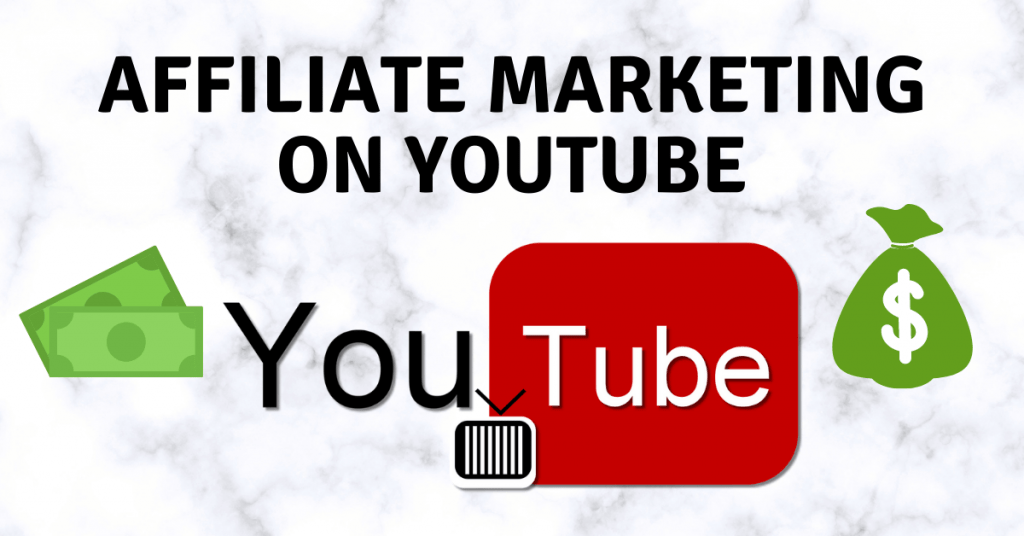
Here’s how you can earn more from YouTube:
- Channel Memberships: This allows dedicated viewers to pay a monthly subscription fee in exchange for exclusive perks. You can offer early access to videos, behind-the-scenes content, community discussions, or even personalized shoutouts to incentivize memberships.
- Merchandise Sales: Showcase your brand with custom merch! Platforms like Teespring or Redbubble integrate with YouTube, allowing viewers to seamlessly purchase t-shirts, mugs, phone cases, and more featuring your logo or catchphrases.
- Brand Deals & Sponsorships: As your channel grows, brands might reach out to collaborate on sponsored content. This could involve product placements, reviews, or even co-created videos. The earning potential varies depending on your audience size and engagement.
- Affiliate Marketing: Promote products or services relevant to your niche and earn a commission for every sale generated through your unique affiliate link.
- WANT TO START AFFILILATE MARKETING ON YOUTUBE? HERE IS YOUR STEP-BY-STEP GUIDE.
- Online Courses & Workshops: Share your expertise with in-depth online courses or workshops. This allows you to charge a premium for valuable content that goes beyond what you offer in your free videos.
- Fan Funding (Super Chat & Super Stickers): Livestreaming features like Super Chat and Super Stickers allow viewers to donate directly during your live shows. This is a great way to monetize audience interaction and build a strong community.
In Conclusion
So, that is it! RPMs, CPMs, Niches, Video Length, Location, and Demographics are all the factors that determine how much you can earn per 1,000 views on YouTube. However, these metrics are limited to revenue from Google AdSense.
As a creator, you must leverage the YouTube platform to enhance your earnings from other sources including Affiliate Marketing, Brand Sponsorships, Digital Products Selling, and more.
Ad Revenue is the easiest way to make money on YouTube. You just fulfill the YPP requirements, and YouTube will take care of the monetization journey. However, you can try various other monetization strategies to boost your earnings, and make YouTube your financial friend.
STOP FOCUSING ON HOW YOUTUBE IS GOING TO MONETIZE YOUR CONTENT INSTEAD RESEARCH HOW TO MONETIZE YOUR AUDIENCE!
During initial phase, you might struggle with lower audience but once your visibiilty increases, the rewards will be so much greater.

